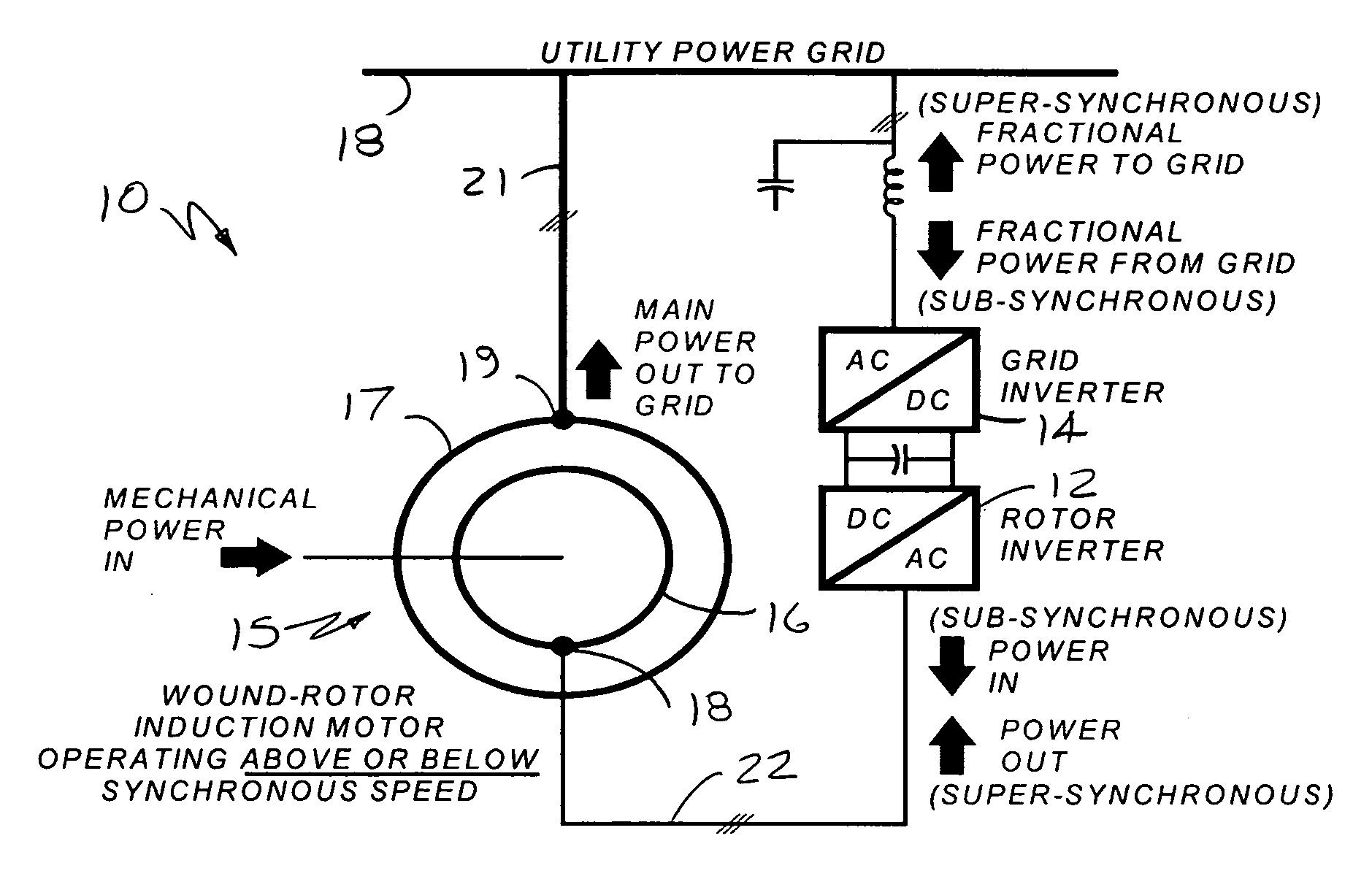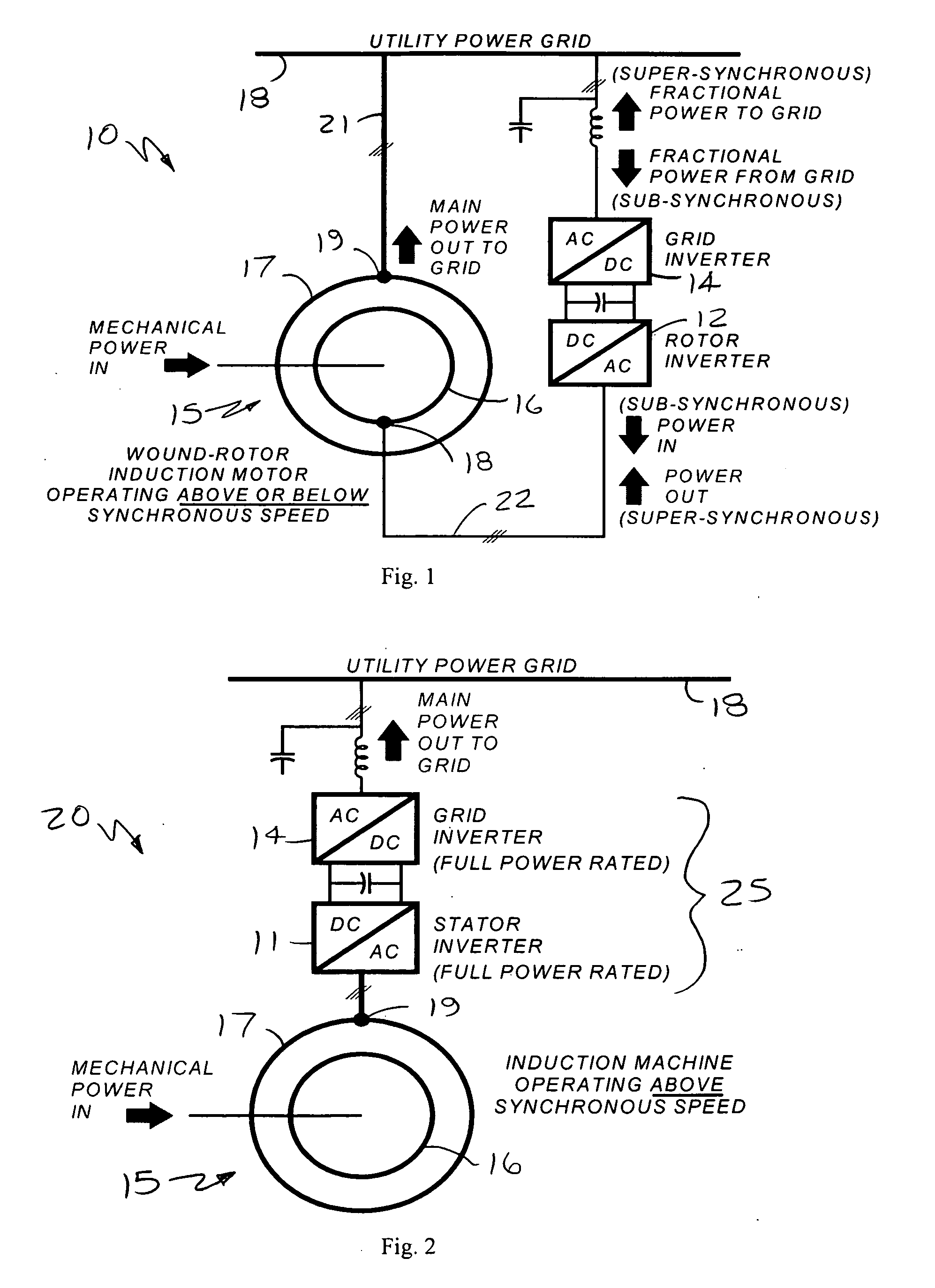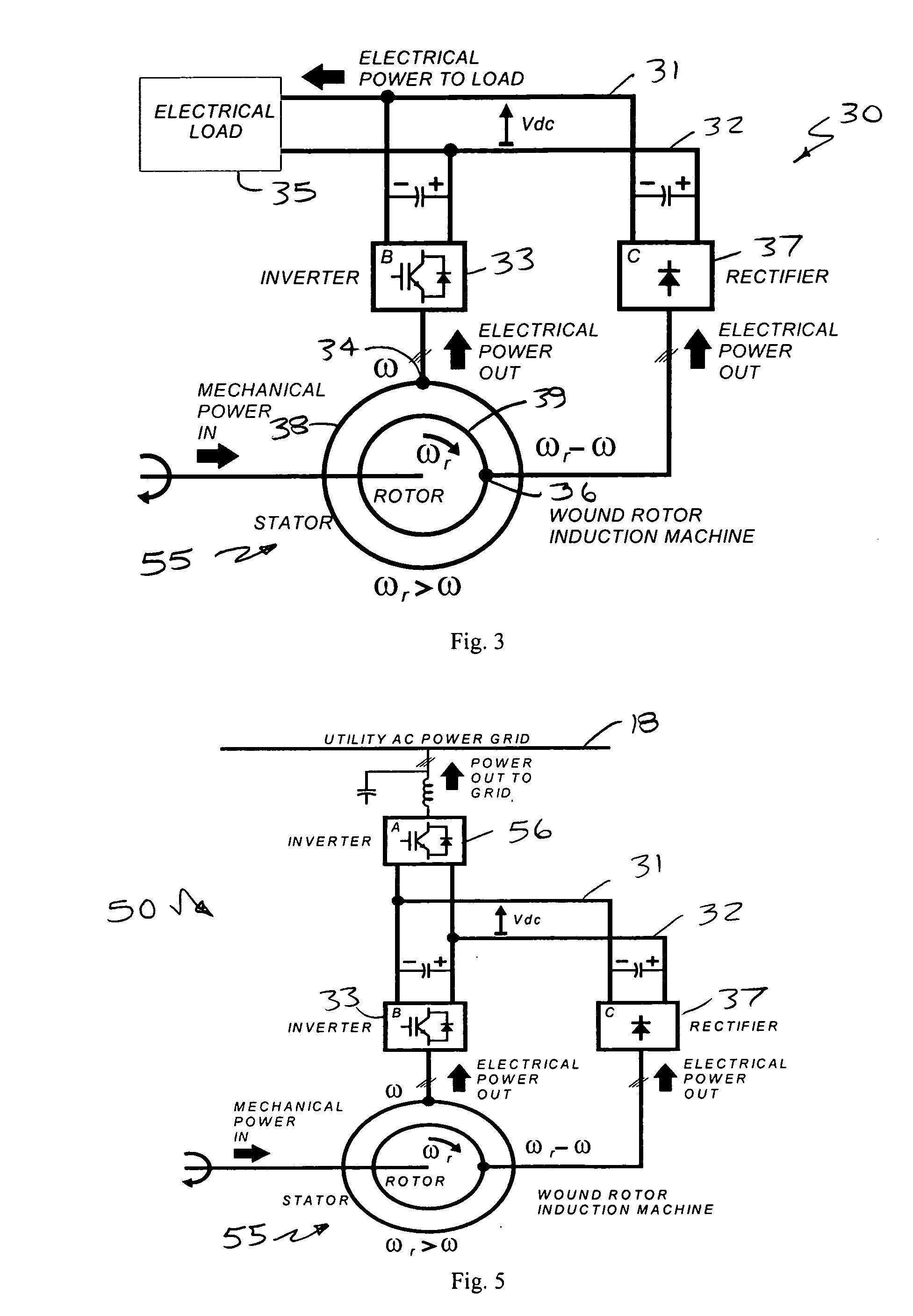Slip-controlled, wound-rotor induction machine for wind turbine and other applications
a wound-rotor induction machine, slip-controlled technology, applied in the control of dynamo-electric converters, control systems, electric generators, etc., can solve the problems of machine b>10/b> operation, relatively high cost of full-power-rated power converters, and the lik
- Summary
- Abstract
- Description
- Claims
- Application Information
AI Technical Summary
Problems solved by technology
Method used
Image
Examples
Embodiment Construction
[0036] A system and method for converting mechanical power from a variable-speed, mechanical-energy source into direct current (“DC”) electrical power (current) delivered to a DC load bus with a regulated DC voltage is disclosed. More specifically, a slip-controlled, wound rotor induction machine generator 30 (“WRIMG”) is disclosed.
[0037] Referring to FIG. 3, the disclosed WRIMG 30 operates as a generator converting mechanical input power into electrical output power. More particularly, the WRIMG 30 delivers DC, i.e., zero frequency, power (current) to a pair of DC load bus lines 31 and 32 having a regulated, constant or substantially constant DC voltage (VDC). The DC load bus lines 31 and 32 are coupled to an electrical load 35 that is capable of absorbing power from a constant voltage DC source. The electrical load 35 can use the DC power directly, e.g., for heating, or can further convert it for various purposes, e.g., for transferring power to an AC electrical power grid.
[0038...
PUM
 Login to View More
Login to View More Abstract
Description
Claims
Application Information
 Login to View More
Login to View More - R&D
- Intellectual Property
- Life Sciences
- Materials
- Tech Scout
- Unparalleled Data Quality
- Higher Quality Content
- 60% Fewer Hallucinations
Browse by: Latest US Patents, China's latest patents, Technical Efficacy Thesaurus, Application Domain, Technology Topic, Popular Technical Reports.
© 2025 PatSnap. All rights reserved.Legal|Privacy policy|Modern Slavery Act Transparency Statement|Sitemap|About US| Contact US: help@patsnap.com



